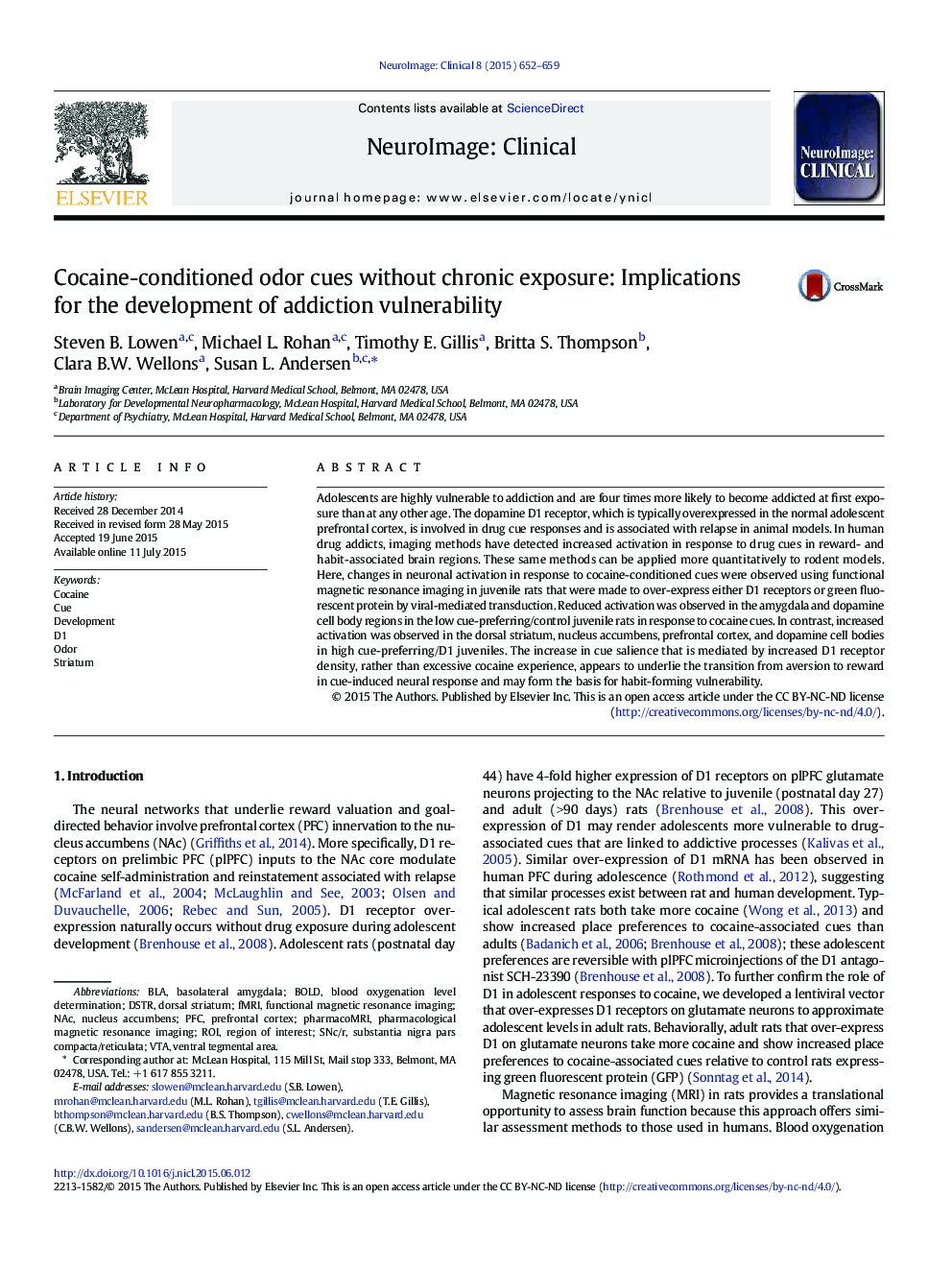| Article ID | Journal | Published Year | Pages | File Type |
|---|---|---|---|---|
| 3075044 | NeuroImage: Clinical | 2015 | 8 Pages |
•Increased D1 receptors in prefrontal cortex increase BOLD in addiction regions.•Cocaine-associated cues activated the amygdala when cocaine was preferred.•Cocaine cues deactivated the amygdala in the absence of cocaine preference.•Genetic engineering can be used to isolate functional responses in neural circuitry.
Adolescents are highly vulnerable to addiction and are four times more likely to become addicted at first exposure than at any other age. The dopamine D1 receptor, which is typically overexpressed in the normal adolescent prefrontal cortex, is involved in drug cue responses and is associated with relapse in animal models. In human drug addicts, imaging methods have detected increased activation in response to drug cues in reward- and habit-associated brain regions. These same methods can be applied more quantitatively to rodent models. Here, changes in neuronal activation in response to cocaine-conditioned cues were observed using functional magnetic resonance imaging in juvenile rats that were made to over-express either D1 receptors or green fluorescent protein by viral-mediated transduction. Reduced activation was observed in the amygdala and dopamine cell body regions in the low cue-preferring/control juvenile rats in response to cocaine cues. In contrast, increased activation was observed in the dorsal striatum, nucleus accumbens, prefrontal cortex, and dopamine cell bodies in high cue-preferring/D1 juveniles. The increase in cue salience that is mediated by increased D1 receptor density, rather than excessive cocaine experience, appears to underlie the transition from aversion to reward in cue-induced neural response and may form the basis for habit-forming vulnerability.
